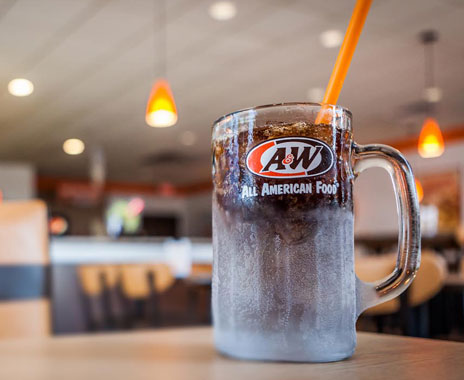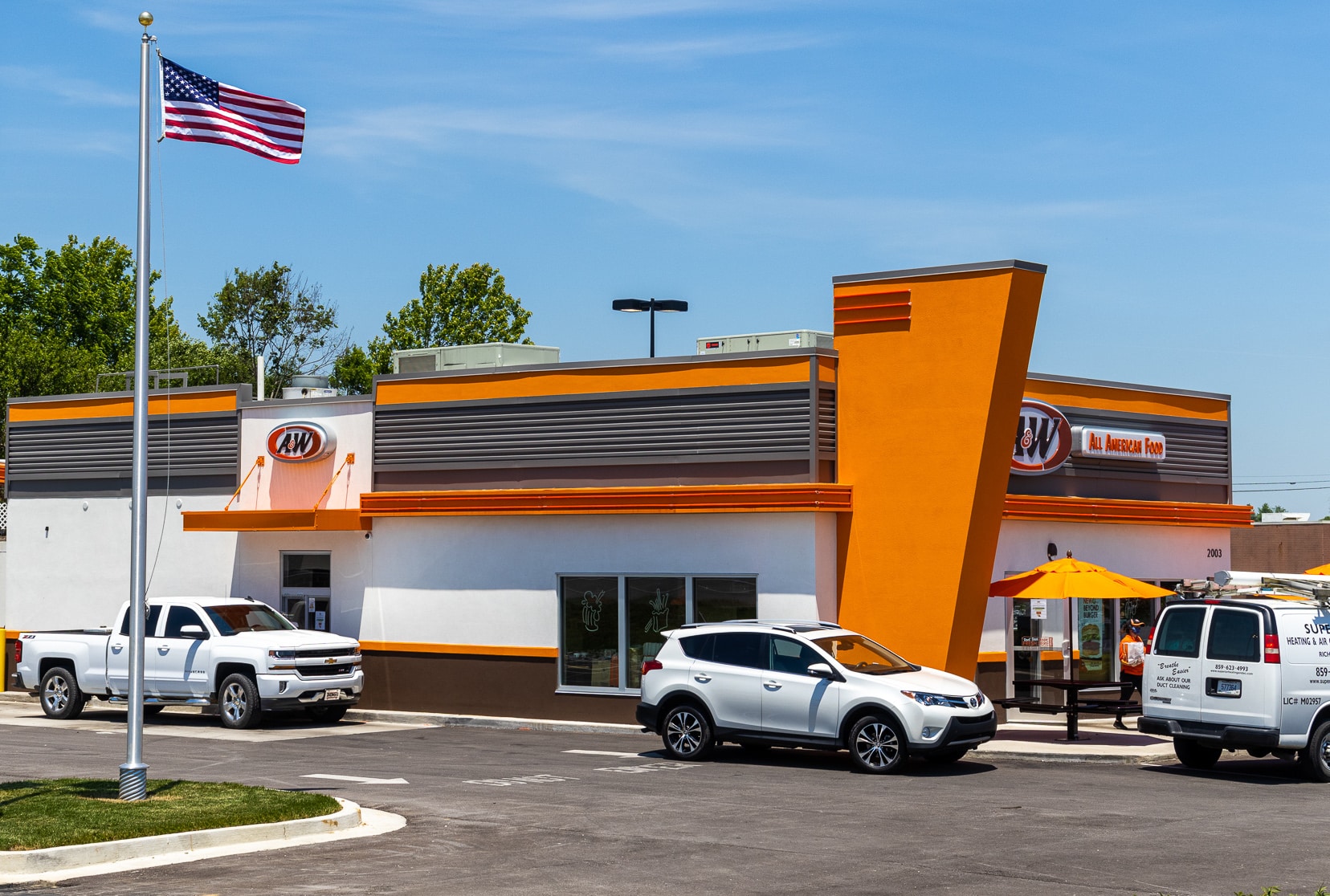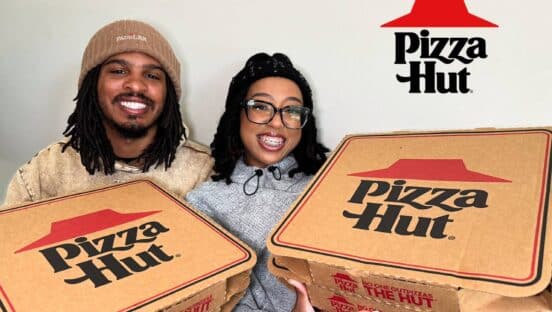A&W was founded in 1919, making it one of the rare companies to survive the Great Depression, Great Recession, and all the economic downturns in between.
Now the COVID-19 pandemic is up to bat, and America’s first franchised chain is still slinging heat and racking up sales.
During the first 10 weeks of the year, same-store sales were up almost 8 percent. The bottom fell out in March, but the brand stabilized in April. Figures turned positive in subsequent weeks.
The restaurant registered double-digit sales growth in May, and is on pace to reach similar numbers in June. It’s a story that dates back to when franchisees acquired A&W from Yum! Brands in 2011. In the years following, AUVs have increased 38 percent, and the legacy chain increased sales eight straight years.
CEO Kevin Bazner says franchise partners and operators deserve the most credit. Throughout the pandemic, A&W—which entered 2020 with 573 domestic locations (330 co-branded stores)—shared tools and practices to streamline carryout and drive-thru business. In the early stages, the brand hosted as many as three webinars per week.
“So it was like, OK, you’ve got 17 cars at the drive-thru, how do you get some of those away? So setting up a second drive-thru lane, pulling every car aside, and running the orders out to them so that you can move people through that drive-thru line quicker,” Bazner says. “That was key. Or drive-in … Converting all those drive-in stalls to pickup work and packaging everything to-go. You can’t stay here and eat, but we can take your food, and we can give it to you to-go.”
Bazner notes that it also helps to have a reputation based on 101 years of history. The CEO explains that in times of crisis, customers gravitate toward A&W because the brand provides comfort.
“[My wife] does all the cooking in the house, and I was starting to ask for meals, not consciously, but she looked up at me one day and she said: ‘You’re asking me to cook stuff from your childhood,’” he recalls. “And I guess it’s that comfort. As a brand, we’re a beneficiary of that, and continue to be.”
The impressive sales numbers during the pandemic have come without A&W fully engaging in the delivery business.
But as Bazner explains, there’s a good reason for that. Many of A&W’s markets are in smaller towns that aren’t covered by national delivery providers—one-third of the system to be exact. In areas where delivery is happening, it’s added a layer of sales, but it hasn’t been significant.

“Reopening dining rooms requires more staffing and more protocol in terms of sanitation and communicating with the customers, and in terms of managing crowd control if you’re doing it right,” A&W CEO Kevin Bazner says.
Drive-thru and drive-in still carry the day. Summertime is peak season for the brand, so Bazner sees adding delivery as more of an opportunity in the fall and winter.
“… We have a good percentage of our system that are skeptical of whether they can do any more business,” Bazner says. “So they’re not rushing to delivery. But it’s certainly something we have launched in the middle of this and continue to learn and get data and one by one we get operators coming on. And I expect more of that as we get through our peak season.”
About 20 percent of dining rooms have come back online, including a few dozen stores that were forced to close during the pandemic because of no ability to utilize off-premises.
Bazner says that so far he’s heard mixed results. Some operators have seen dine-in sales cannibalize off-premises while others have seen incremental growth. The A&W leader adds that dining rooms are certainly not hurting the brand, but they do present risk/reward situations.
“You’re taking on some risk,” he says. “You’re exposing not only your customers, but your crew, for a greater risk of infection. More interaction inside is going to create more opportunities for infection to spread versus what is the potential sales gain? What’s the upside? The other downside is, labor availability is still a big challenge for the industry—for slightly different reasons than before the pandemic—but our operators in our own stores are challenged every day. … Reopening dining rooms requires more staffing and more protocol in terms of sanitation and communicating with the customers, and in terms of managing crowd control if you’re doing it right.”
The future looks bright for the chain, which has received increased interest from potential franchisees amid the pandemic. Recent sales are appealing, but so is the financial flexibility upon entry. A&W is lowering royalties in the first year of all new franchise agreements from the standard 5 percent to 3 percent. Second-year royalties are 4 percent. Initial fees on multi-unit agreements also are being discounted.
A&W is expanding in markets of all sizes across the nation, including deals with 10 new franchisees. Sixteen units are in development in locations like Chicago, St. Louis, Wyoming, New York, Minnesota, Louisiana, and Arkansas. Seven of those will be inside convenience stores or travel centers.
In big markets where other quick-service brands are saturated, A&W has white space—further enticing possible investors.
“Some of these major metropolitan areas, we have an opportunity to get in the burger business that other brands can’t offer because they’re sold out,” Bazner says.
Bazner says A&W’s attractiveness as an investment is tied to its business model in which franchisees are the primary shareholders.
He explains that nothing touches a franchise restaurant unless it’s been thoroughly vetted by franchisees. Partners are heavily involved in the decision-making process, and prospective franchisees love having a voice.
The long-term view of the business benefits everyone, Bazner notes. It’s a view that will carry A&W through this crisis and the next one, whenever that may be.
“We’re not looking to hit home runs and be on the latest bleeding edge trends,” Bazner says “We’re quite happy. Over eight years, we’ve got 38 percent AUVs—that’s 4.5, pushing 5 percent a year—I’ll take that every year. … Unlike private equity that will starve you for cash, our ownership group will take nothing out of the business. They want it all reinvested to continue to grow and strengthen this business for generations. So it’s a generational view, which in not only our industry, but in business in general, is rare.”







